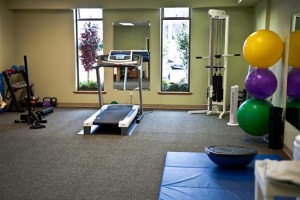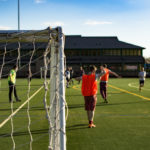 Sports therapy plays a massive role in professional and amateur sports worldwide. One of an athlete’s major challenges in their career is staying as free from injuries as possible. Physiotherapy, rehabilitation and injury prevention are some of the important tasks in which sports therapists play an integral role.
Sports therapy plays a massive role in professional and amateur sports worldwide. One of an athlete’s major challenges in their career is staying as free from injuries as possible. Physiotherapy, rehabilitation and injury prevention are some of the important tasks in which sports therapists play an integral role.
What Is A Sports Therapist
Sports therapists are healthcare professionals, but the specific focus of their job is the prevention and rehabilitation of sporting injuries. They look to reduce the overall risk of injury that an athlete is subjected to, as well as helping injured athletes return to their full capabilities as soon as possible. They also work with members of the general public, regardless of age or sporting ability, not just professional athletes, helping people to recover from injury so that they can work again.
Sports therapists provide treatment for injuries, using basic medical techniques and massage. Their knowledge of sports science needs to be expert, as they also often need to refer patients to more specialised medical professionals. All treatment techniques are based on sound scientific and medical principles.
What Is The Difference Between A Physiotherapist And A Sports Therapist
The main difference between these two medical professions is the focus on sport. While sports therapists have a specific focus on how sporting activity can cause injury, physiotherapists have a much more general focus to their work. Sports therapists also tend to be more ‘hands on’, in that they will tape up injuries on pitch side, as well as offer massage and other treatments to injured athletes.
There is a degree of overlap between the two labels, and a physiotherapist can also be classed as a sports therapist. In general terms, however, a physiotherapist would have a much wider sphere of medical knowledge than a sports therapist. Many people who begin as sports therapists will go on to become fully-fledged physiotherapists later in their career.
How To Become A Sports Therapist
In the UK, the best way to become a sports therapist is to go to college, study a sports science course or equivalent, once complete move on to study for a degree in the subject at an accredited university. It is relatively simple to find a suitable course, accredited universities are listed on the Society of Sports Therapists (SST)’s website. Finding the right course is vital, if you want to pursue a professional career in this sector.
Practical experience is very important if you are to attain the skill levels that you will need to practice professionally. Always check to see what kinds of practical placements are offered on a course, and where those placements are located. The chance to work with top sports teams is also important, as being in a professional sporting environment is very different to the amateur scene.
[sociallocker]
Therapists need to learn about the kinds of pressure which athlete’s bodies and minds come under when they are professional. This kind of experience can only be gathered from a degree course which has good placements available. Any university which can offer high-quality placements should also be able to guide you well when it comes to finding work after your course has ended.
A degree course of this type will last for three years. In each of those three years, your studies will take on a different focus. This will then build into a comprehensive pyramid of professional knowledge by the time that you graduate.
The first year of study typically involves studying topics such as anatomy, assessment of injury, exercise physiology, immediate injury management and nutrition. The second year will build on that knowledge, with you taking your knowledge of the treatment and assessment of injuries to a higher level. You will also study concepts such as trauma management, rehabilitation concepts, physiology of training and biomechanics. The second year is also usually when an occupational placement of some kind takes place.
In the third year of study, you, a potential sports therapist will look in greater depth at issues surrounding exercise and health. You will also learn how best to respond to grave emergencies and take your diagnostic and clinical skills to a new level of expertise. This is also usually when students begin to work at placements in a sports therapy clinic, helping experienced professionals look after the university sports teams.
In order to be accepted onto a degree course, you will need to have five GCSEs at grades A-C. You will also need A-levels or their equivalent in vocational qualifications such as BTECs. Many universities will ask for Biology and Sports Science A levels, to at least grade C, and it can also be an advantage if you have some voluntary experience in the sector.
Degrees are usually assessed by a variety of means. These include traditional exams, as well as practical assessments and coursework.
Where Can I Work Once Qualified
When you are qualified as a sports therapist, that means you are a healthcare professional who can work in a range of contexts. Most sports therapists will not stick to purely football, but work in a number of sporting contexts. It is also a good idea to associate yourself with a gym or sports centre, as this can be an excellent source of clients. Evening and weekend work is commonplace and frequent.
How Much Does A Sports Therapist Get Paid
Many sports medicine jobs are potentially available in the ranks of professional sport. Obviously, specific salary levels depend on the sport in which the therapist is working, as well as the level at which a club operates. A therapist working at a Premier League football club, for example, will earn much more than an individual who works for a part-time football club.
Having said that, a typical starting salary is around £17,000 pounds a year. That can rise to between £20,000 and £25,000, with experience. A sports therapist working for a top professional sports team might end up with a salary of around £35,000 pounds per year. Many sports therapists are freelance, and will work for a number of clubs or organisations at the same time. [/sociallocker]


